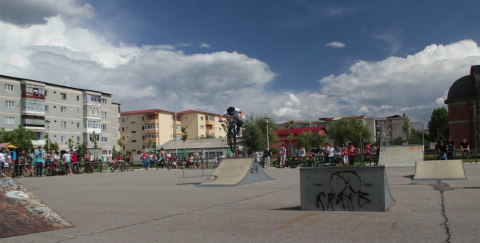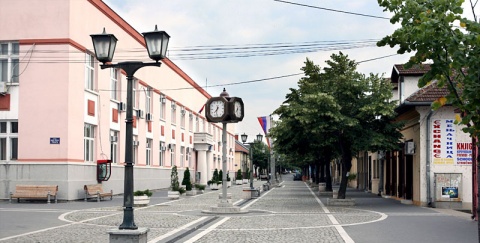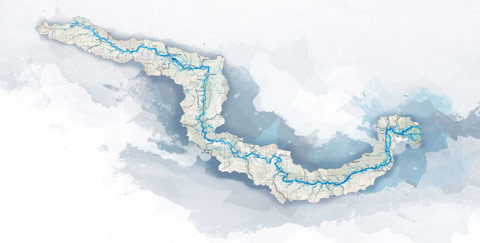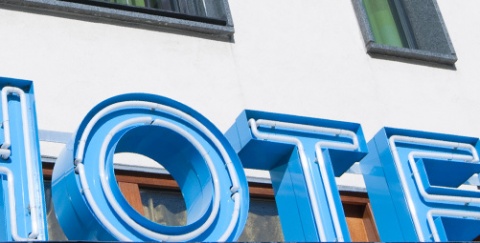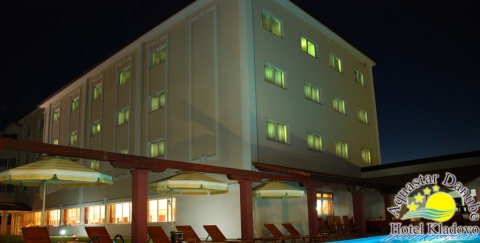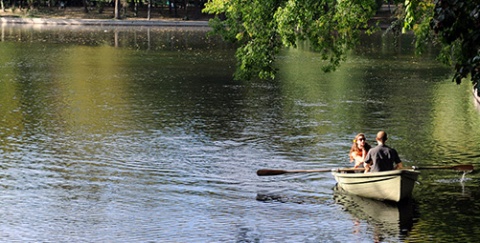
Blue Week Route
(You may find the official map in the photos section also)
Maioreasa Church
The first Orthodox Church built in Drobeta Turnu Severin, several years after the establishment of the city. It was founded in 1842. by
Major Ion Ciupagea and his wife Dumitrana. Originally the church had three towers; the two sides were abolished in 1872. The church suffered some changes in 1882, 1902 and 1906, generally adding the necessary elements (pews, pulpit choir).
Schitu Topolnitei Monastery
The first church was built by Nicodim in the XIV century. The present church, in the cross shape was constructed in 1646 by founder Lupu Buliga. It was painted in 1673 in fresco Byzantine style by Gregory "The Greek" and Dima "The Roman". Original frescoes, almost 400 years old, are still preserved today. The theme of "Judgement" painted in the exterior facade west is remarkable, looking like the monasteries of Moldova. The wonderful wooden church of the monastery was built in 1832 and restored in the 90s.
T. Vladimirescu Park
A cosy park in the centre of town Drobeta Turnu Severin who hide,among beautiful ornamental plants, the bust of Roman Emperor Traian made in 1906 by sculptor D. Franasovici Dacian and the King Decebal bust, made in 1972 by sculptor M. Butunoiu. The park is quiet and is flanked by terraces next to City Hall and Theodor Costescu Theatre.
The Medieval Fortress
The first attestation of the fortress is in the years 1233-1247 as the residence of the Knights of St. John. It was rebuilt in the fourteenth century and has added elements. In 1524 it was almost destroyed by the Ottoman Sultan Suleiman invasion, the city remained only one tower.
The Water Tower
Built in 1913 for the city's water supply, the Water Tower (or the Water Castle) is an emblematic monument for Drobeta Turnu Severin. Currently the tower has lost the active role in water supply of the city but, after restoration and consolidation, an elevator was installed and became an exhibition pavilion and the place where tourists can have the best panorama of the city.
Hydroelectric Power Plant “Ðerdap I”
The hydropower and navigation system “Ðerdap 1”, a complex and multipurpose facility, was constructed during the period from 1964 to 1970. The biggest hydro technical facility on the Danube, with the total length of 1278m, is completely symmetrical and designed so that each country (Serbia and Romania) has equal parts of the main structure. Each country has one electric power plant, a ship lock and 7 spillway bays each, out of the 14 located in the common overflow dam. The state boundary is the central line of the structure. The facility represents an extraordinary attraction in the field of industrial heritage.
Traians Bridge Ruin
The bridge construction was ordered by the Emperor Traian as a supply route for the Roman legions fighting in Dacia. It was work of the Syrian architect Apollodorus from Damascus and it was constructed remarkably quickly in only two years (between 103 and 105). This remarkable ancient construction work was 1135m long, 15m wide and 19m high measured from the surface of the river. Simultaneously with the bridge, on river banks Roman camps Drobeta and Pontes were constructed. Today remains of the first columns (out of 16) can be seen on both sides of the coasts of the Danube.
Trinity Monastery, Manastirica
The Monastery, located on the height of 236 meters, was constructed in the 14th century during the rule of King Milutin. According to the legend, Prince Lazar’s daughter and Sultan Bayezid’s wife, Olivera, used to live here after the Monglos had defeated her husband. Staring from the second half of XIX century, religious service was performed in the monastery with interruptions, due to its dilapidated state and the possibility of collapsing. Tables and benches are available for usage in the garden of the monastery in a case that you would like to take a short rest.
St. George Church
As early as 1735, the town of Kladovo had a small St. George’s Church, where manuscripts were kept, thanks to which even today we can clarify some part of the history of the Orthodox community, and maybe even the origin of the name of the town. The existing St. George’s church was constructed in 1856, during the rule of Obrenovic royal family, and it was consecrated a year after. This church is the only one in Kladovo and religious service is still performed in it.
Ðerdap Archeological Museum
Museum was opened in 1996 and it collects and preserves artefacts and other documentation in order to present cultural heritage of the Iron Gate region. Museum holds rich collections of artefacts and records from prehistoric, Roma and Medieval sites. The most important finds are permanently exhibited, since they represent, in the best way, the millennial past and importance of these ancient coasts of the Danube.
Kladovo beach
… It is magnificent to stand on the coast of the Danube…/… Magnum est stare in Danuviiripa…
Fetislam Fortress
This fort on the Danube river was constructed by the Turks in 1524. They named it Fetislam, which means ‘the victory of Islam’. It had two parts – the Small town and the Big town. As it is presumed, the Small town was an artillery base protected by circular towers. The gates leading to the fort had marble plates installed on them which honoured the Sultan Mahmud II. The fort also included an open-air amphitheatre, while near the fort there was a sports centre with a complex used for recreational and professional sports.
DANUBE.TRAVEL has no control over the website content generated by users and/or visitors, neither such content represents a statement, opinion, recommendation or rating by DANUBE.TRAVEL. For further information please refer to DANUBE.TRAVEL – General Website Terms and Conditions of Use.
 EN
EN DE
DE
